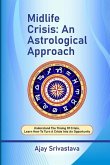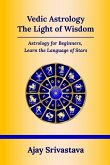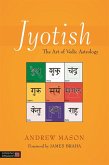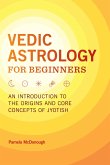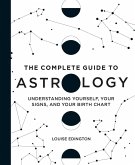Let us unlock the mysteries of Vedic astrology with this comprehensive guide to the Panchang, the five essential elements of time: Tithi, Vara, Yoga, Karana, and Nakshatra. The essence of the Panchang is how the Sun and Moon relate to each other on a daily basis. Panchang is used for almost every branch of Vedic astrology: natal, election, prashna (horary), religious calendars and to understand the energy of the day. Understanding Panchang is the first step to learning Astrology. Panchang of the day affects our emotions, temperament, and nature. Panchang of birth time can give added information about who we are and how we feel. It can strengthen the effect of the planets and give us additional qualities that we may not understand purely through the natal chart. This book provides a comprehensive guide to Tithi, Vaar, Yoga, Karana and Nakshatras. Whether you're a beginner or a seasoned astrologer, this book is your ultimate guide to learning astrology. In this book, I would like to cover the Panchang which holds a unique and important place in Astrology. Modern astrologers generally do not dwell much on a few elements of Panchang and start making predictions. This results in giving predictions that may not be accurate. Before we proceed further, I will share an incident. I was walking along with a very aged astrologer. He was almost blind but every morning he used to ask about the time of sunrise, sunset, Yogas, even Karan, etc. After that, he used to make predictions based on queries only. He generally never made birth charts, until he was required to do so. It was raining heavily and someone asked when the rain would stop Pandit ji. He asked me what the Moon Nakshatra is and when it will change. He predicted the time when the rain would stop and rain and it stopped raining that time. Simple way of making predictions which we astrologers do not apply. So, I recommend that students of astrology should give due importance to Panchang. In our ancient references, I could not find the mention of Divisional charts like D-3, D-7, and D-10 up to D-120, except the D-9 chart which is read as the Navamsha chart. The reason may be the non-availability of time-measuring devices to such levels. And now of late research, the number of divisional charts has gone much further. There is still much more information to be decoded in Basics of Astrology, in elements of Rashis', houses and planets. With the support of 27 Nakshatras and padas plus the support of 5 limbs of Panchang, we get sufficient information for predictive astrology and I consider divisional charts as a comparative tool for confirmative support if needed. But our modern-day astrology students are more emphatic in creating volumes of research which is making this science complex and complicated for new aspirants. Otherwise, the passing down of this science was in a hierarchal manner which travelled from one generation to another for centuries but of late that evolution has become a thing of the past. However, I would still emphatically admit that what our older wisdom was guiding us was simple and fabulous. The term "Panchang" is derived from two Sanskrit words: "Pancha," meaning five, and "Anga," meaning limbs. Together, they signify the five essential elements that form the backbone of astrological calculations and predictions. The five limbs of the Panchang - Tithi (lunar day), Vara (weekday), Nakshatra (constellation), Yoga (planetary combination), and Karana (half-day) - are more than just concepts. These five elements of time hold the base for any astrological predictions. This book seeks to explore and demystify the Panchang, a vital tool that has been guiding millions across cultures and generations.
Hinweis: Dieser Artikel kann nur an eine deutsche Lieferadresse ausgeliefert werden.
Hinweis: Dieser Artikel kann nur an eine deutsche Lieferadresse ausgeliefert werden.


